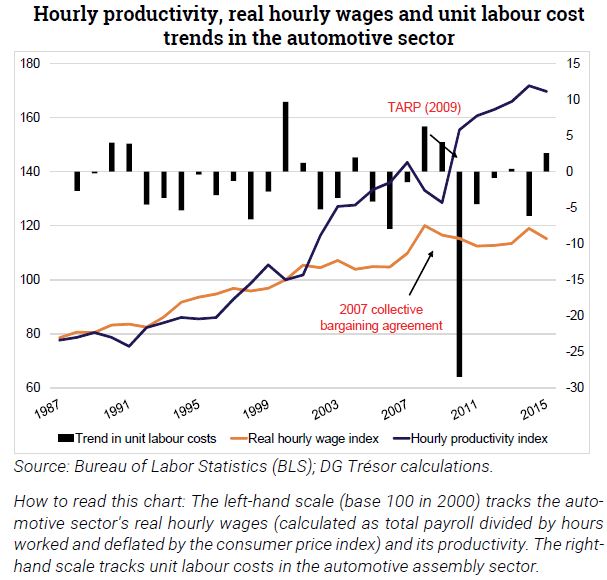Trésor-Economics No. 214 - The US automotive industry: Challenges and outlook
The 2008 economic and financial crisis hit the US automotive industry hard - especially the "Big Three" automakers General Motors, Ford and Chrysler.
This crisis caused unprecedented upheaval on the US automobile market, leading to a sharp reduction in auto manufacturing. Between 2006 and 2009, the automotive industry lost 300,000 jobs, equivalent to nearly 30% of pre-crisis jobs in the sector.
In 2009, the US federal government responded by implementing two major policy measures. Firstly, the American Recovery and Reinvestment Act (ARRA) shored up domestic demand and included tax provisions specifically for automobiles. The automotive industry was also one of the main sectors targeted by the second measure, the Troubled Asset Relief Plan (TARP), a supply-side initiative that bailed out and restructured Chrysler and General Motors.
Since then, the US automobile market has regained positive momentum, underpinned by productivity gains, and has set new sales records. Automakers appear to be in better financial and economic health.
The industry is now back on sound footing but is facing major challenges in the short and long terms: uncertainties over the long-term future of NAFTA; the sustainability of growth in the automobile market; increasingly stringent energy efficiency standards; the spillover effect of technological advances in electric motors, connectivity and self-driving vehicles; the widespread use of mobility services. Each of these innovations could challenge the place held by the 14 automakers present in the US automotive industry.
In these circumstances, policymakers can play a key role to avert or cushion self-driving vehicles' potential negative impact on jobs, and can set up a pro-investment, pro-innovation framework while protecting individuals and upgrading transportation infrastructure.
